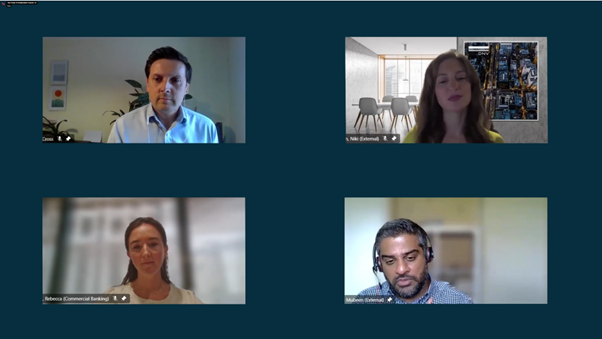In our latest webinar, Social Invest Director Luke Cross sat down with three figures who are involved in sustainable finance and housing. The discussions considered the growing importance of Sustainable Finance Frameworks and how housing providers can go about setting them up.
For the session, Luke spoke to Becky Tozer, Associate Director at Lloyds Banking Group, Niki Bowen, Principle ESG & Sustainable Finance Consultant at DNV and Imran Mubeen, Director of Treasury at Bromford.
Lloyds has developed its own framework for housebuilders with the help of DNV, while Bromford has created its own framework. The three participants shared their experiences of developing these frameworks and some key points are included below.
Why SFFs matter
Each panelist is asked to explain why they believe sustainable finance frameworks are important and each had similar views on why these frameworks are vital for housing providers.
Niki suggests that not only do they help housing providers raise capital but that they also help push the bar within the built environment sector, while Imran explains that Bromford’s SFF has enabled the organisation to create a ‘golden thread’ of sustainability which they can communicate to funders.
Becky also notes their importance in combatting greenwashing. She says that some are worried about shouting about their SFF for fear of greenwashing but in reality, a SFF ‘is a perfect way to talk about and disclose everything you’re doing in a transparent and fair way’.
Setting up a framework is an iterative process
Having all been involved in the creation of SFFs, the speakers are well placed to explain the process it involves.
A key theme that all the speakers mention is the fact that it is an iterative process and requires ongoing conversations with partners.
Niki says: “It’s important to note that, during the process, for getting a framework to be assessed by a second party opinion provider is not a single shot. There are a lot of discussions beforehand to make sure you’re comfortable with what you are doing.”
Imran and Becky also note the importance of continuous conversations with partners.
Tailoring a framework to a specific organisation
Maintaining an open line of communication is part of the wider collaborative approach housing providers need to take when developing a framework.
Becky explains that, when starting out, many organisations want a standard template to follow. But she notes that often when they begin speaking to Lloyds they are able to draw out the things that make that organisation unique, which then informs their approach to sustainability.
She says that initially, clients were primarily focused on just affordable homes and green buildings to demonstrate their ESG credentials. But she adds that nowadays many are looking at factors like solving homelessness, offering apprenticeships and delivering renewable energy.
The importance of credibility
A key point in the discussion was about credibility and how to demonstrate this.
Imran gives the example of when Bromford published an error regarding the organisation’s scope 1, 2 and 3 emissions.
He says: “We wanted to embrace that error with sincerity and authenticity so we did go out publicly to say we made a mistake. What we have found through the framework and using it with investors and funders, is that they are really open to sharing that honesty with us.”
Niki explains: “It’s really about showing what you can do, and if you can’t, how you are going to get there.”
How to benchmark properly
Another key question was around the effectiveness of benchmarking and how to do it effectively.
Imran was clear that he is in favour of both qualitative and quantitative benchmarking. He says: “I do believe that some of the great things we do can’t always be quantified…but we should be talking about them.”
He says an example could be where Bromford has helped lift a family out of homelessness or helped them into employment.
Niki also highlighted the difficulty around how often a framework should be updated but she said this is flexible. She says there’s a “fear” that a framework must be updated very regularly but says that it tends to be every couple of years. She explains that this remains “an open conversation”.
To view the full webinar, please follow the link: https://vimeo.com/851630626/de7188a4dc?share=copy



